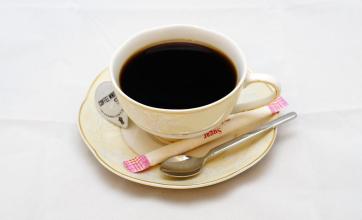Introduction to the Flavor and Taste characteristics of Coffee Bean in Saint Roman Coffee Manor, Costa Rica
Costa Rica has a total population of 4.667 million (2013), mainly concentrated in cities such as San Jose, Alajuela and de Sampalado. Whites and Indo-Europeans account for 95%, blacks account for 3%, Indian natives account for about 0.5%, other ethnic groups account for 1.5%, and Chinese account for about 50,000, mainly in San Jose, Guanacaster, Punta Renas, Limon and other provinces. The capital city of San Jose has a population of 1.4 million. [17]
Cultural editor
General situation
Costa Rica has a variety of cultures, which is the cultural confluence of Central and South America. When the Spaniards conquered America in the 16th century, the northern part of Costa Rica was the southernmost territory of the Mayan civilization, the central and southern regions were Chibucha territories, and the west coast was inhabited by black slaves traded from Africa from the 17th to 18th centuries. at this time, many Chinese farmers came here to build railways.
Costa Rican music has tambito and punto, which are very unique. For example, "punto guanacasteco" comes from Guanacaster province, while "punto sancarleno" comes from San Carlos (San Carlos) in Arafura province. There are many music and legends from the north of Costa Rica (once the Mayan sphere of influence) and the Atlantic coast.
Language
The official language is Spanish. The popularization rate of English is high among high-quality people.
Religion
95% of the residents believe in Catholicism, while a few believe in Christianity and Judaism.
festival
New year: January 1
Holy week: Thursday and Friday before Easter in March or April
National hero Juan Santa Maria commemorates ambassadorial day: April 11, 1856
International Labour Day: may 1st
Anniversary of the annexation of Guanacaster into the territory of Colombia: 25 July
Angel Virgin Day: August 2
Mother's Day: August 15
Independence Day: September 15, 1821
National Day: September 15, 1821 [18]
Cultural Festival: November 12
Christmas: December 25 [1]
High-quality Costa Rican coffee is called "extra hard beans". This kind of coffee can grow above 1500 meters above sea level. Altitude has always been a problem for coffee growers. In addition, due to the high altitude drop caused by sufficient rainfall, is also very beneficial to the growth of coffee trees. However, although coffee is grown at higher elevations,
Costa Rica
Costa Rica
There are many advantages, but the additional transportation costs must be taken into account, which is likely to make coffee production unprofitable. The coffee industry in Costa Rica has adopted new technologies to increase efficiency, including the use of "electric eyes" to select beans and identify coffee beans of irregular size.
Tarasu, located in the south of the country's capital, SanJos é, is one of the country's most valued coffee growers. LaMinitaTarrazu coffee is a famous local product, but its production is limited, about 72600 kilograms a year. It is grown on a piece of land called LaMinita, which is owned by nearly three generations of the McAlpine family in the UK. In fact, this land can produce more than 450 tons of coffee a year. But Tarasu Latin America coffee is grown without artificial fertilizers or insecticides, and its harvesting and selection are done by hand, in order to avoid some damage to coffee beans caused by air spray selection.
Other varieties
Other coffees worth mentioning are JuanVinas,PR, H.Tournon, Windmill,SHB, Montebello and SsntaRosa. Fine coffee is generally grown in Geredia and the central canyon. Another striking type of coffee is Sarchi (one of the five towns that represent Costa Rica's Coffee Road), which grows on the slopes of the PoasVolcano volcano, 53km from San Jose. Saatchi, founded in 1949, has a land area of 30770 hectares and grows sugar cane and coffee. The area is also famous for its handicrafts, attracting tourists from all over the world

Important Notice :
前街咖啡 FrontStreet Coffee has moved to new addredd:
FrontStreet Coffee Address: 315,Donghua East Road,GuangZhou
Tel:020 38364473
- Prev

Coffee granules full of El Salvador Himalayan coffee flavor taste manor characteristic boutique coffee
The national emblem of El Salvador was used on September 15, 1912. The national emblem of El Salvador is an equilateral triangle whose three yellow lines represent equality, truth and justice respectively. Five volcanoes rise between the Pacific Ocean and the Atlantic Ocean, symbolizing the five countries in Central America. The pole of freedom and the red cap of freedom stand high on the top of the mountain, radiating the light of freedom and liberation.
- Next

Guatemala Antigua coffee producing area flavor taste estate introduction Guatemala eight coffee producing areas
San Marco Volcano San Marco has the hottest climate of Guatemala's eight coffee-producing regions, with rainfall of up to 200 inches (5, 000mm). The rainy season is earlier than in other areas, and coffee trees bloom earlier. As in other remote areas of Guatemala, volcanic San Marco coffee is grown and processed by small farmers. Due to frequent rains during the rainy season, most coffee is pre-dried in the sun and then Guar
Related
- Detailed explanation of Jadeite planting Land in Panamanian Jadeite Manor introduction to the grading system of Jadeite competitive bidding, Red bid, Green bid and Rose Summer
- Story of Coffee planting in Brenka region of Costa Rica Stonehenge Manor anaerobic heavy honey treatment of flavor mouth
- What's on the barrel of Blue Mountain Coffee beans?
- Can American coffee also pull flowers? How to use hot American style to pull out a good-looking pattern?
- Can you make a cold extract with coffee beans? What is the right proportion for cold-extracted coffee formula?
- Indonesian PWN Gold Mandrine Coffee Origin Features Flavor How to Chong? Mandolin coffee is American.
- A brief introduction to the flavor characteristics of Brazilian yellow bourbon coffee beans
- What is the effect of different water quality on the flavor of cold-extracted coffee? What kind of water is best for brewing coffee?
- Why do you think of Rose Summer whenever you mention Panamanian coffee?
- Introduction to the characteristics of authentic blue mountain coffee bean producing areas? What is the CIB Coffee Authority in Jamaica?

